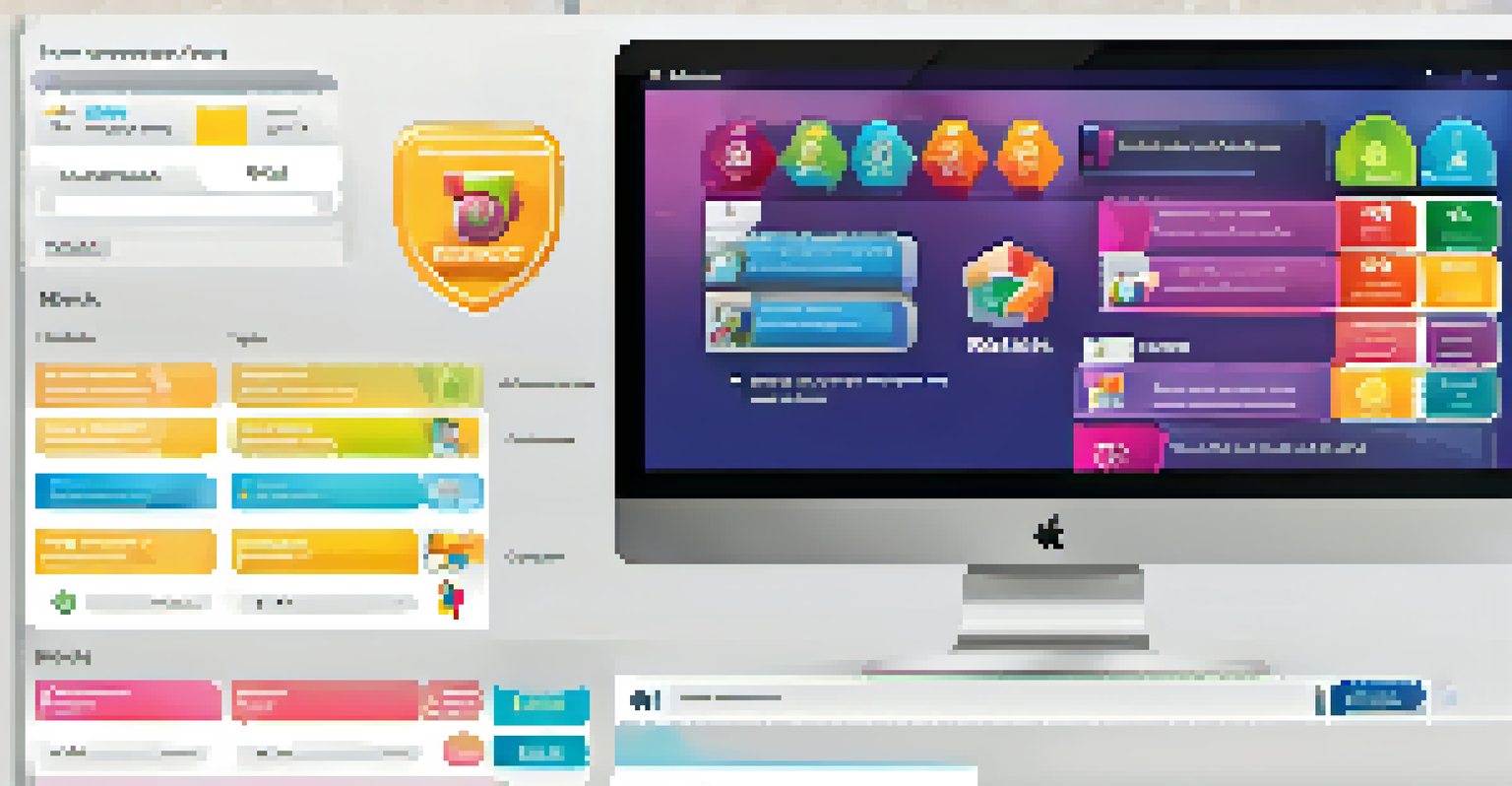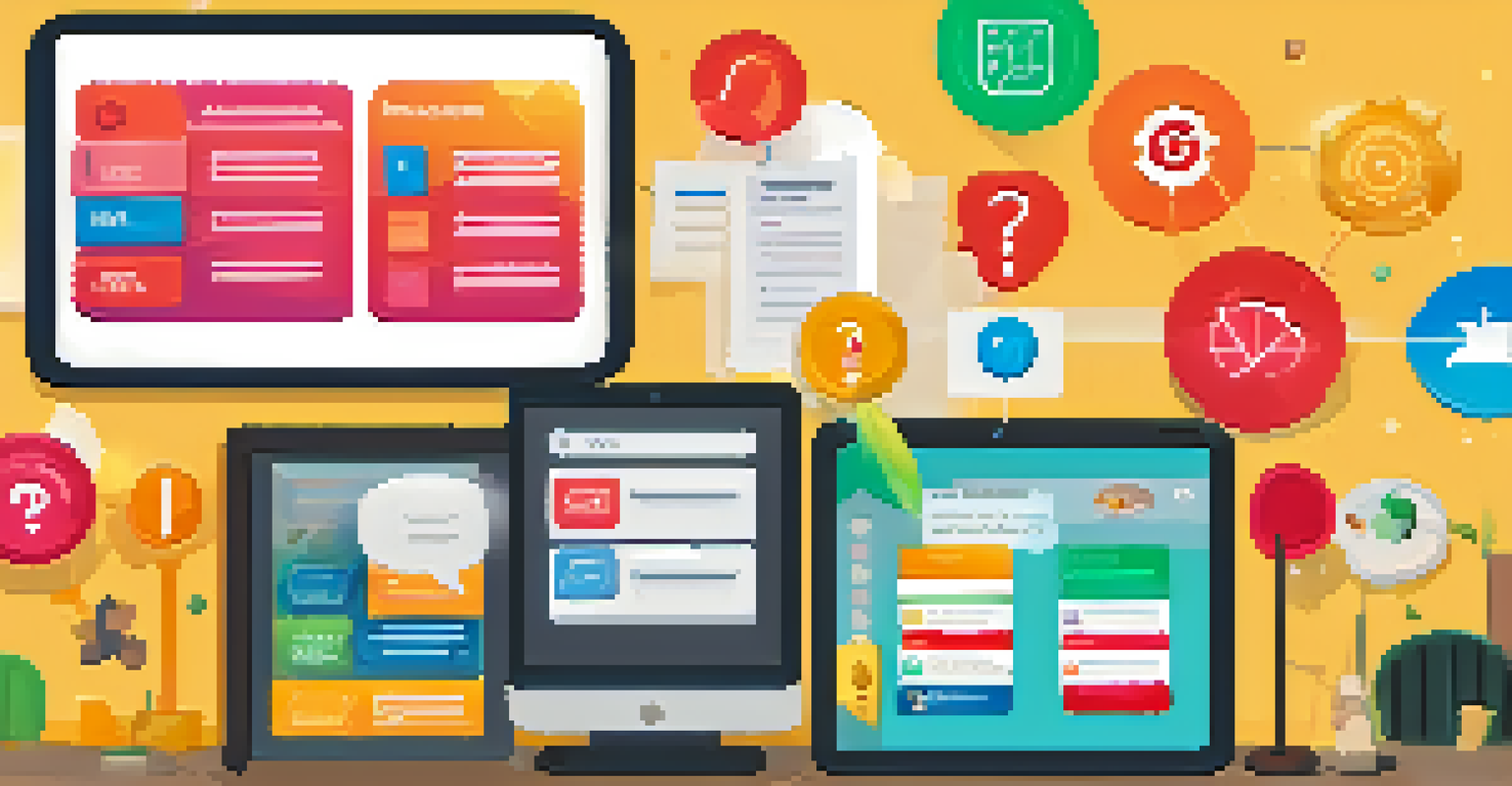Integrating Gamification Techniques in LMS for Better Learning

Understanding Gamification and Its Benefits in Learning
Gamification involves applying game design elements in non-game contexts to boost engagement. In learning management systems (LMS), this could mean incorporating points, badges, or leaderboards to motivate learners. By making learning more enjoyable, gamification can transform the educational experience into something more dynamic and interactive.
Gamification is not about making a game; it’s about using game-like elements to enhance the learning experience.
When learners are engaged, they're more likely to retain information and develop deeper understanding. For example, a platform that rewards users for completing modules with points can create a sense of achievement. This approach not only enhances motivation but also encourages a friendly competitive spirit among users.
Ultimately, gamification taps into our natural instincts for competition and achievement. By integrating these techniques into LMS, educators can create a more compelling and effective learning environment, leading to better outcomes for students.
Key Gamification Elements to Implement in LMS
There are several key elements of gamification that can be effectively integrated into LMS. These include points, badges, levels, and leaderboards, each serving a unique purpose in enhancing the learning experience. For instance, earning points for completing tasks can encourage consistent engagement and participation.

Badges can serve as visual representations of accomplishments, providing learners with a sense of pride and motivation to achieve more. Levels can create a sense of progression, allowing learners to feel a sense of advancement as they complete courses. Leaderboards can foster healthy competition, pushing learners to strive for higher performance.
Boost Engagement with Gamification
Incorporating game elements like points and badges in LMS increases learner motivation and retention.
By thoughtfully incorporating these elements, LMS providers can create a more interactive and rewarding experience. This not only keeps learners engaged but also encourages a culture of achievement and continuous improvement.
Creating Engaging Learning Paths with Gamification
A well-structured learning path is essential for effective education, and gamification can enhance this process. By designing courses that allow learners to choose their own paths, you create a sense of autonomy and personalized learning. This freedom encourages students to take ownership of their education.
When learners are engaged, they are more likely to retain information and develop deeper understanding.
Incorporating gamified elements into these paths can make them more engaging. For example, allowing learners to unlock new content as they progress or complete challenges can keep their interest alive. This sense of achievement can lead learners to explore topics they might not have tackled otherwise.
Moreover, integrating storytelling elements into these paths can further enrich the experience. When learners feel like they're part of a narrative, their emotional investment in the material increases, leading to better retention and understanding.
Measuring Progress with Gamification Techniques
One of the most significant benefits of gamification in LMS is the ability to measure learner progress effectively. Traditional assessment methods can sometimes feel daunting, but gamified assessments can transform this experience into something more enjoyable. For instance, quizzes can be designed as games where learners earn points for correct answers.
Feedback in a gamified environment can also be immediate and constructive, helping learners identify areas for improvement. Instead of waiting for a final grade, learners can see their progress in real-time and adjust their study habits accordingly. This ongoing feedback loop supports a culture of continuous learning.
Foster Collaboration Among Learners
Gamified group challenges enhance teamwork and create a sense of community in the learning environment.
By combining progress tracking with gamification, educators can foster a sense of achievement in their learners. This can encourage them to strive for higher levels of understanding and mastery over the subject matter.
Enhancing Collaboration Through Gamification
Gamification can significantly enhance collaboration among learners in an LMS. By incorporating team challenges or group projects with gamified elements, you encourage students to work together while fostering a sense of community. This collaborative approach not only makes learning more fun but also teaches valuable teamwork skills.
For example, you might create a scenario where teams earn points for completing group tasks or solving problems together. This encourages communication and collaboration, making the learning process more dynamic. Additionally, recognizing team achievements through badges or rewards can enhance motivation.
In essence, gamification can turn solitary learning into a shared adventure. This not only improves engagement but also builds relationships among learners, enriching the overall educational experience.
Incorporating Feedback Mechanisms in Gamified LMS
Feedback is crucial in any learning environment, and gamification can enhance how learners receive it. By using gamified feedback mechanisms, educators can provide real-time insights that help learners understand their performance. For instance, instant feedback on quiz results can motivate students to improve without the anxiety of traditional assessments.
Gamified feedback can also be more engaging than standard comments. Using points, levels, or badges as indicators of progress can make learners feel rewarded for their efforts. This not only boosts motivation but also encourages them to seek out additional resources and support.
Provide Real-Time Feedback
Gamification allows for immediate feedback, helping learners understand their performance and improve continuously.
Ultimately, effective feedback in a gamified LMS supports a growth mindset. When learners view feedback as an opportunity for improvement rather than criticism, they are more likely to embrace challenges and persist in their educational journey.
Challenges to Consider When Implementing Gamification
While gamification offers numerous benefits, it's essential to consider potential challenges when implementing it in LMS. One common issue is the risk of overemphasizing competition at the expense of collaboration. If not carefully balanced, a focus on leaderboards can lead to unhealthy rivalry rather than fostering a supportive learning environment.
Another challenge is ensuring that gamification elements are aligned with educational goals. It's crucial to remember that the primary objective is learning, not just earning points or badges. If the gamified elements distract from the core content, they may hinder rather than enhance the learning experience.

Lastly, accessibility must be a priority. Not all learners respond to gamification in the same way, and some may feel discouraged if they don't perform as well as their peers. Creating an inclusive gamified environment means considering diverse learning styles and preferences, ensuring that all learners can benefit.